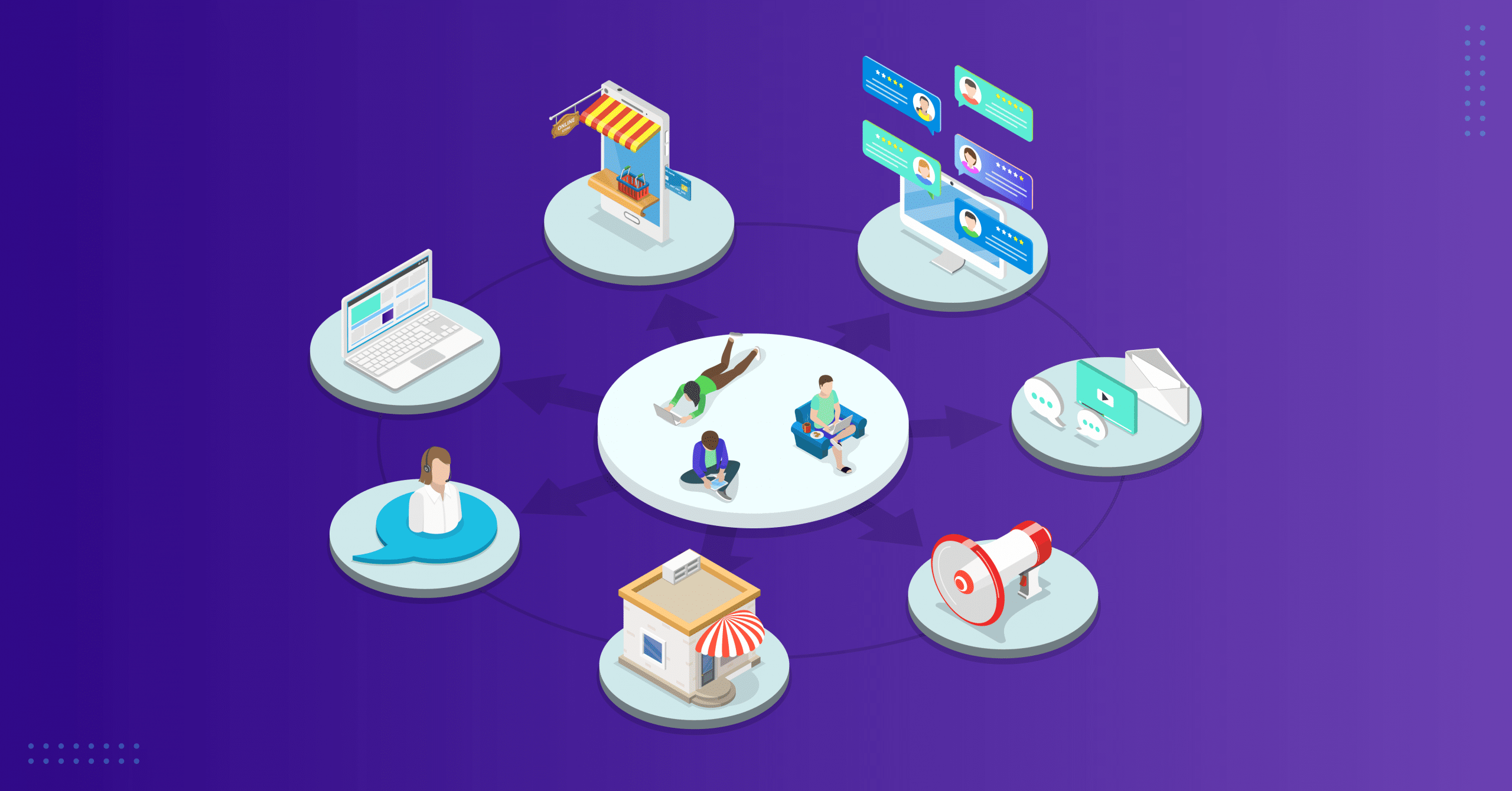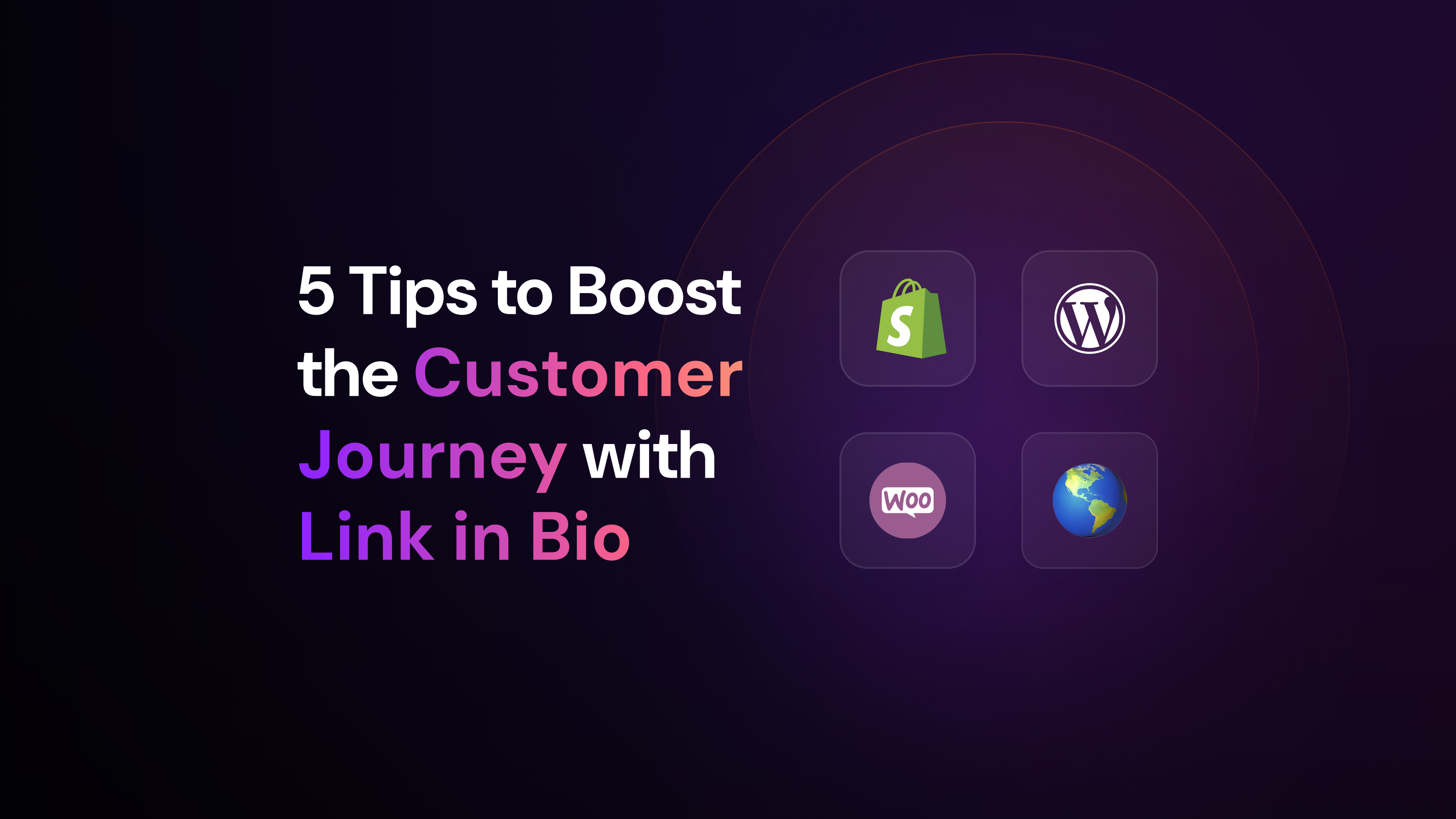Omnichannel puts the customer at its ultimate core. This integrated and all-places strategy personalizes touchpoints in the customer journey to offer the most effective shopping experience anytime and anywhere.
It is fair to say omnichannel is the perfect response to a new customer-centric culture. Here’s everything you should know about it.
Taking care of customers according to their expectations is the greatest of brands’ responsibilities. This concern has made marketing, technology, and sales teams work together for years to increase customer satisfaction in different channels.
From mobile apps to desktop blogs, from e-commerce to social media and physical stores, customers expect the same service excellence in any place, at any time.
To reach that excellency level, companies these days must assemble and harmonize various components, such as data, multimedia marketing, and multiple sale channels, to get to their audiences at the right time and place, and intently offer the best of the best experience.
That’s when omnichannel walks in.
# Subscribe and stay on top of news on our blog
What is omnichannel?
Omnichannel is a marketing and sales strategy that combines and crosses different channels to provide an outstanding and personalized shopping experience. By blending several elements into an integrated whole, omnichannel removes the boundaries between digital and physical spaces, optimizing brand messages, general communication, and, most importantly, customer experience.
Already a reality in some great retailers, omnichannel brings together e-commerce, shopping apps, blogs, social media, marketplaces, ads, and physical stores to improve the consumer lifecycle and customize its touchpoints, whether they’re digital or offline.
In order to be omnichannel, brands need to mix products, marketing, sales, customer support, supply chain, and more, to make their deepest reasoning clear: Put the customer in its ultimate core and let channels combine (and recombine) to deliver consistent and efficient shopping and communication initiatives.
Some omnichannel examples are:
- Being able to buy a product that isn’t available in-store, using an app
- Purchasing on e-commerce and collecting at the store
- While collecting, being swiftly introduced to new launches that really interest you
- Abandoning the cart and getting an email with the offer of a new, exclusive customer loyalty program that follows up to the abandoned product
- Getting a shipping notification via e-mail and SMS
Omnichannel vs Multichannel
We can say every omnichannel retailer contains multiple channels. That makes omnichannel essentially multichannel, but the contrary isn’t true. Therefore, these terms can’t be used interchangeably.
The main difference between these “channel” concepts is that omnichannel integrates its operations while multichannel components act separately.
In a multichannel strategy, there isn’t mutual communication. In fact, it is common for multichannel retailers to face lack of information exchanges and a sense of competition between their channels.
When it comes to branding, multichannel sends out the same message in all channels and to all consumers, regardless of the lifecycle stage they’re at.
This combined with the fact multichannel doesn’t allow personalized experiences contributes to the idea that multichannel focuses on products, not on user experience.
Meanwhile, omnichannel not only integrates channels but collects and transforms customer data into personalized interactions with their consumers base. It means that, unlike lack of communication, an omnichannel brand message quickly adapts through the customer journey and remains relevant.
It doesn’t matter if the customer is online or not: The same unique message will be sent. Most businesses invest in multichannel today, although we should mention that omnichannel consumers spend between 15% to 30% more than multichannel consumers.
It is also important to distinguish omnichannel from cross channel. Cross channel strategies also integrate channels to offer more comfortable and agile shopping experiences. However, omnichannel stands out for being the only method to assess consumers’ behaviors, habits, and preferences to create personalized touchpoints.
Why should brands be omnichannel?
You probably know how exigent the modern consumer is. Technology has put a personal device and free access to information in customers’ hands, and people have grown fond of browsing and comparing. Technological and ever-changing lifestyle also makes customers enjoy shopping experiences that are flexible, trustworthy, and responsive to their needs. Buying when and where they want is a basic requirement for customer experience and care.
Another detail you should pay attention to is that people have enough time and information to consider which is the best product or service. And, thanks to content marketing, there is a huge number of tools that tailor customer journey to this new demanding and multi-connected profile. Brands work hard to make the most out of marketing in social networks, blogs, messaging applications, and more.
Still, content isn’t all it takes to engage people: Companies need to focus on customer behavior.
And, if you’re curious about it, you should definitely check these Google; and Salesforce; insights:
- 68% of shoppers purchase movies, books, and video games both in-store and online
- 66% of shoppers prefer online shopping to find items, compared to 27% who prefer offline
- 55% of buyers say that retail experiences are disconnected from channel to channel.
- 59% of shoppers prefer to shop online to get better prices
- 83% of U.S. shoppers that visited stores had used online search before going into the store
That being said, brands should be omnichannel because customers are omnichannel. They don’t split a brand’s perception into offline and online. It means that, if their experience is damaged in any channel, frustration will lead buyers to switch to another brand. Recall that 58% of consumers will turn to competitors if they face a single bad customer experience.
However, omnichannel benefits are not exclusive to shoppers. Companies that integrate sales, logistics, technology, and marketing channels also benefit, as they make consumers happy and likely to buy more – who doesn’t want more revenue, right?
In addition, satisfied clients talk about their experiences with friends and family and help brands increase their customer base.
Omnichannel strategies also cut costs by rethinking opportunities based on consumer habits. Another advantage is that unifying communication promotes a more consistent brand image and encourages synergy between operations. Often, it is cheaper to adopt omnichannel and optimize strategies than to open more sales channels.
Finally, we should mention that being all-places – as latin Omni suggests – makes your brand capable of solving multiple use cases, whether online or not.
How does omnichannel work in e-commerce?
Omnichannel has a huge impact on e-commerce. Known for its convenience, e-commerces allow customers to buy anywhere, at any time, and provide relevant information about products and services that interest them.
The omnichannel mindset turns e-commerces operations more efficient. Its approach aims to provide online shoppers with seamless and continuous buying experiences.
Digital components that absorb customer data through e-commerce purchases can be easily accessed to create a well-built consumer understanding. The goal here is to identify what methods will bring better results and which channels are more effective to engage and delight the customer.
Another possibility is that e-commerce can lead to many other shopping opportunities. Think about the number of shoppers that buy online and decide to collect their products in-store.
How great would it be to offer specific products once the customer arrives? Or, to look at it from another perspective, think about what will happen to e-commerces that won’t let shoppers choose how and when to get their hands on their purchases. Will they fail to deliver convenient experiences? They surely will.
When correctly implanted, omnichannel e-commerces strategies will quickly identify customer touchpoints that will lead to specific solutions – and, as a consequence, to more engagement and brand loyalty.
The effects of omnichannel in customer experience and culture
Omnichannel is all about customer experience. Its core is to deeply understand buyers’ needs and embrace them, all while respecting their time and delivering meaningful messages.
Whether online or offline, omnichannel interactions should cause a sense of identification and present a brand that gives buyers the chance to access their preferences.
The real impact here is that, by understanding people’s needs, omnichannel is extremely powerful to generate follow-up interactions and engaging buying stages.
All data available must be used to create a context for future touchpoints in multiple shopping environments. And the secret to the omnichannel done right is that this context must be continued, wherever people are.
Customer experience must be continued, otherwise, brands fail to engage and retain. If your consumers don’t identify with the message you’re sending through your channels, then they’ll look for other messages they can connect with.
That’s why you have to step back and focus on the fact that, for your channels to be truly omnipresent, you firstly need to perceive the habits and preferences of your target audience.
If you think omnichannel only personalizes messages and experiences, you better think again. Being able to collect and interpret universal customer data is a fascinating way to go a little further and customize offers and even products.
Let’s move on to some examples of how to do that!
Be inspired: real omnichannel experiences
Sephora: My Beauty Bag
Born with digital DNA, the giant beauty Sephora created a special feature to connect clients to their favorite products. Named “My Beauty Bag“, the feature – which is also an app – is part of the Beauty Insider loyalty program, and allows customers to access products and past purchases whenever and wherever they want.
While using My Beauty Bag, clients can, whether in-store or not, search for the right shade of lipstick, rebuy old purchases, and recommend products to friends. Sephora’s stores are equipped with tablets that make it possible for consumers to log-in immediately and add new items to their bag or “loves” – previously known as Sephora’s shopping list.
My Beauty Bag enables shoppers to collect favorite products, organize them in one place, create wish lists, keep track of both online and in-store purchases, and track rewards.
Burberry: Series B
Based on customer data, Burberry created a new series of limited edition products that remain available for only 24 hours on the 17th of every month. The timing here creates hype and a sense of urgency for customers to reach out and buy the exclusive and recently launched products. Purchases can be made on Instagram, WeChat, LINE, and even in the Korean Kakao platforms.
This type of strategy was essential to increase consumer engagement and create anticipation, and it paved the way for the development of new activities across multiple channels that focus on customer experience and interactions.
Amazon: Amazon Prime and Amazon Go
Even if a huge number of companies worldwide won’t have as many resources as Amazon has, there are some key details to pay attention to in their omnichannel strategy that can inspire other businesses, especially when it comes to data unification.
With the mission to be the world’s most customer-centric company, Amazon has been investing in omnichannel for years now.
When Amazon Prime membership arrived, it called public attention by offering free shipping. It saved time and was convenient. As time went by, other benefits were provided, such as unlimited video and music streaming, discounts, and even a wardrobe, that allows customers to try on items online before purchasing them.
Omnipresent, Amazon decided to expand to physical dimensions and launched Amazon Go, a convenience store where customers don’t need to wait in line.
Through the Amazon Go app and artificial intelligence features, clients register everything they’re putting into the cart and leave the store as soon as they want. There’s no need to pay in the cashier. Their receipts appear in the app and money is charged from the Amazon account.
This new type of purchase is called “Just Walk Out” and embeds different AI technologies and data to provide the best shopping experience. Omnichannel at its best!
As you might have noticed, omnichannel is intimately related to customer experience and retention – and brands that ignore its potential are most likely to fail in maintaining competitive advantage.
Want to learn more about engagement and make your customers brand loyal? Access our Customer Experience Guide!



